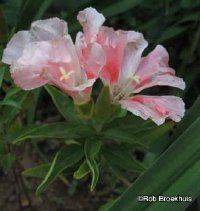Godetia also goes by the names Farewell-To-Spring and Clarkia, the latter honoring Captain Clark of the Lewis and Clark expeditions. The species (formerly called Godetia botanically) has been improved to produce varieties for spring gardens as well as for cool coastal and mountain locations in the summer.
Description of godetia: Godetias produce cup-shaped blossoms in clusters at the tips of strong stems. Flowers are white, pink, red, or lilac with contrasting colors in most. There are also double varieties. Foliage is gray-green. Height ranges from 10 inches up to 21/2 feet, and they grow about 10 inches wide. Shorter varieties have a mounding habit.
Advertisement
Growing godetia: Godetias grow best during the cool weather. In Zones 9 and 10, sow outdoors in the fall for earliest bloom in the spring. In other zones, seed in the garden as early as a seedbed can be prepared. Grow in light, sandy loam in full sun or partial shade. Space plants 12 inches apart. Taller varieties may need staking.
Propagating godetia: By seed. Because they do not transplant well, sow seeds directly in the soil outdoors. Barely cover; they need light to germinate.
Uses of godetia: Plant in beds and borders, grow in rock gardens, and naturalize in open meadows. Tall varieties make good cut flowers.
Godetia related species: Many of the flowers usually referred to as clarkias are hybrids of C. unguiculata and C. pulchella (Clarkia elegans). Each species has a variety of garden forms, including double-flowered varieties. Generally, the flowers of clarkias grow along the stem, facing outward, and are about 1 inch in diameter. Colors include white, pink, salmon, and purple.
Godetia related variety: F1 hybrid Grace is available in red, shell pink, rose-pink, and a mixture of colors. Unwins Taffeta provides a mix of colors.
Scientific name of godetia: Clarkia amoena
Advertisement
